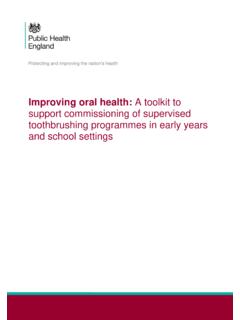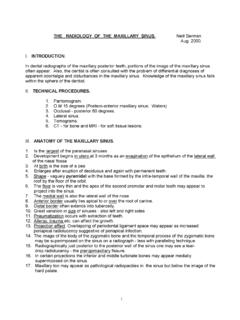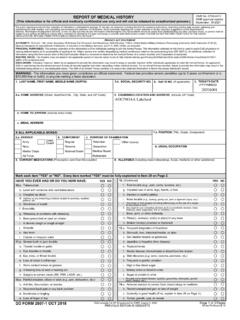Transcription of Management of Equine Cushing’s Disease and Equine ...
1 Management of Equine Cushing s Disease and Equine Metabolic Syndrome Dana Zimmel, DVM, DACVIM, DABVP Equine Pars Intermedia Dysfuntion (PPID) also known as Equine Cushing s Disease Hyperadrenocorticism is one of the most frequently diagnosed endocrine abnormalities of the horse. It is one of the most common diseases of horses greater than 15 years of age. The clinical signs associated with what has historically been recognized as abnormally elevated cortisol levels or Cushing s syndrome is better defined as Equine Pars Intermedia Dysfunction (PPID).
2 Cushing s syndrome in humans has a different origin with in the pituitary gland than the horse which is why there has been a shift to call this problem PPID in horses. The clinical Disease has been well recognized for years, but the pathophysiology remains poorly understood. Clinical Signs Clinical signs of PPID can vary probably depending upon the stage of Disease . The average age is 20 years but the range is 7-42 years of age. Over 85% of the horses are > than 15 years of age. Ponies and Morgans have a high incidence of the Disease .
3 1. Hirsutism (long curly hair coat) is a common finding and is characterized by failure to shed a long curly hair coat. The coat may become thin and long, the underlying skin thin and flaky. 2. One of the most common clinical complaints includes polyuria/polydipsia (drinking too much and urinating too much). PU/PD in the horse is characterized by intake of water over 25-30L. Owners complaint of a consistently wet stall. 3. Laminitis can be seen in horses with pituitary dysfunction. 4. Lethargy or docile attitude. 5. Hyperhydrosis (excessive sweating) 6.
4 Ravenous appetite 7. Muscle mass atrophy 8. Bulging eyes are not uncommon and are due to abnormal redistribution of supraorbital fat. 9. Blindness due to compression of the optic chiasm by the enlarged pituitary. 10. Immunosuppression -Repeated infections are common with sole abscesses, tooth root infections, and sinusitis. 11. Infertility Therapy Treatment seldom achieves complete resolution or remission of Disease . Reasons to treat: 1. Quality of life may be enhanced through treatment. 2. Infertility may be temporarily overcome by treatment of older broodmares with confirmed pituitary adenoma.
5 Two drugs are currently available to treat PPID: 1. Pergolide Dose: to 2 mg total/adult horse per day, although expensive, has had beneficial effects. Maximum dose should not exceed 6 ug/kg. Horses should be started at a lower dose for 4-6 wks. After treatment for this period, a dexamethasone suppression test is repeated. If the horse suppresses, treatment at this level should be maintained indefinitely. If the horse does not suppress, increasing the dose by mg until a response is noted is recommended. Compounding pharmacies have made this drug much more available to the horse owner.
6 For example Franck s Pharmacy in Ocala formulates 1 mg/ml for 60 mls. Remember that you get what you pay for. A cheep pharmacy may be selling a product that does not contain any of the prescribed medication. 2. Cyproheptadine Dose: mg/kg daily. The results of treatment with this drug are mixed. If no improvement is noted, the dose can be increased to twice daily intervals. Some studies indicate that it is marginally effective and controlling clinical signs. 3. Supportive care is also important for enhancement of the quality of life of these horses.
7 Very often these animals are pets, foundation stallions, and valuable broodmares. Their value is usually intrinsically emotional rather than economic. Most owners are interested in either prolongation of breeding through a few more seasons or improving the quality of life of an old pet. 1. High quality preventative medicine consisting of regular deworming, dental care, and consistent farrier work are important. 2. Aggressive treatment of sole abscess, corrective shoeing for laminitis, NSAID's for pain are all indicated. 3. In the warm months, clipping of unnecessary hair to minimize skin infections is important.
8 4. In the cold months, blanketing may be indicated for those individuals with a long but thin hair coat. It also may provide some energy conservation for maintenance of body condition. 5. Maintaining body condition is a primary concern. Because these horses do not utilize glucose normally, overfeeding is contraindicated. Likewise, weight loss can contribute to poor muscle tone and wasting. Complete feed rations formulated for the older horse may add bulk and fat without overwhelming carbohydrate levels. Equine Metabolic Syndrome The term Equine metabolic syndrome (EMS) has been adopted to describe any horse or pony with chronic insulin resistance that does not suffer from PPID.
9 (Frank, ACVIM proceedings 2008). Definition -EMS is currently defined as horses with the presence of: 1. Insulin resistance 2. Obesity and/or regional adiposity 3. Prior or current laminitis (evidence of founder rings or rotation of P3 on radiographs) 4. Often the horse is a easy keeper Clinical Signs The most common breeds affected are pony breeds, Morgans, Paso Finos, and Norwegian Fjords. But Arabians, Quarter horses, Thoroughbreds, Saddlebreds, Tennessee Walking Horses and Warmblood have been diagnosed with the syndrome. The age that most horses are affected is between 10-20 year although horses from 5-15 years of age can be affected.
10 Most of these horses are obese for several years before insulin resistance develops. The clinical signs vary: Laminitis often begins in the spring with rapid growth of grass Colic can be associated with pedunculated lipoma formation at an early age Obesity has been linked to abnormal reproductive cycling in mares General obesity with regional and/or regional adiposity Cresty neck, fat deposits around the tailhead, sheath and supraorbital fossa, with occasional subcutaneous masses on the trunk Treatment The goal of treatment is to improve insulin sensitivity and thereby raise the threshold for laminitis and to avoid alteration in the diet that might result in a gastrointestinal disturbance that could trigger an episode of laminitis.





